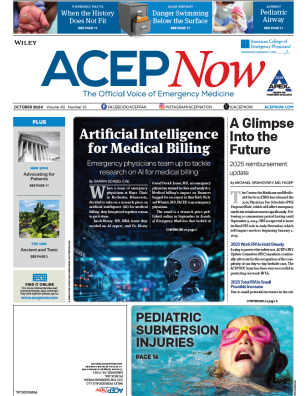Patients with intracerebral hemorrhage (ICH) can occasionally present with rapidly resolving deficits that resemble transient ischemic attacks (TIA), researchers report.
“One assumes that bleeding in the brain parenchyma causes permanent tissue damage which should produce lingering neurological deficits,” Dr. Sandeep Kumar from Beth Israel Deaconess Medical Center, Boston, Massachusetts, told Reuters Health by email. “Our observations tell us that in some patients with intracerebral hemorrhage there are other mechanisms that are operative in influencing clinical recovery after ICH.”
ICH usually presents with an abrupt onset of neurological deficits that progress over time, and it is associated with high rates of mortality and morbidity. In some patients, the deficits are less pronounced and brain imaging is required to differentiate ICH from an ischemic stroke.
Dr. Kumar and colleagues used a database search to assess the frequency of TIA-like presentations of ICH, which have not previously been reported.
They identified 34 patients with transient deficits among 2,137 patients who had a spontaneous ICH. They detailed the clinical courses of 17 patients whose records were complete in their JAMA Neurology online report.
The median patient age was 65, and most hemorrhages involved the basal ganglia or neighboring white matter tracts. All hemorrhages were small (mean volume, 17 mL) with no intraventricular hemorrhage or hydrocephalus.
Patients experienced paresthesia, hemiparesis, dysnomia, dysarthria, dizziness, and other symptoms. The typical symptoms of ICH were usually absent.
These symptoms lasted less than 30 minutes in nine patients, six hours or less in five patients, and more than 12 but less than 24 hours in one patient.
Among nine patients for whom detailed follow-up information was available, there were no recurrences of symptoms suggestive of a stroke or TIA in the ensuing one to eight months.
“Our report shows that transient clinical signs and symptoms resembling TIAs or small infarcts can occur in patients with ICH and solely relying on clinical phenomenology to call an event a TIA without neuroimaging can be misleading,” Dr. Kumar said. “Although this clinical presentation of ICH may be unusual, it needs to be eliminated before administering any antithrombotic agents or anticoagulants.”
“We need prospective studies possibly using novel neuroimaging techniques to better understand the basis of this phenomenon,” Dr. Kumar said. “It may provide valuable insights in understanding the mechanism of recovery after ICH that can be exploited to develop therapies.”
The authors reported no external funding or disclosures.



No Responses to “Transient Neurological Symptoms Possible With Intracerebral Hemorrhage”